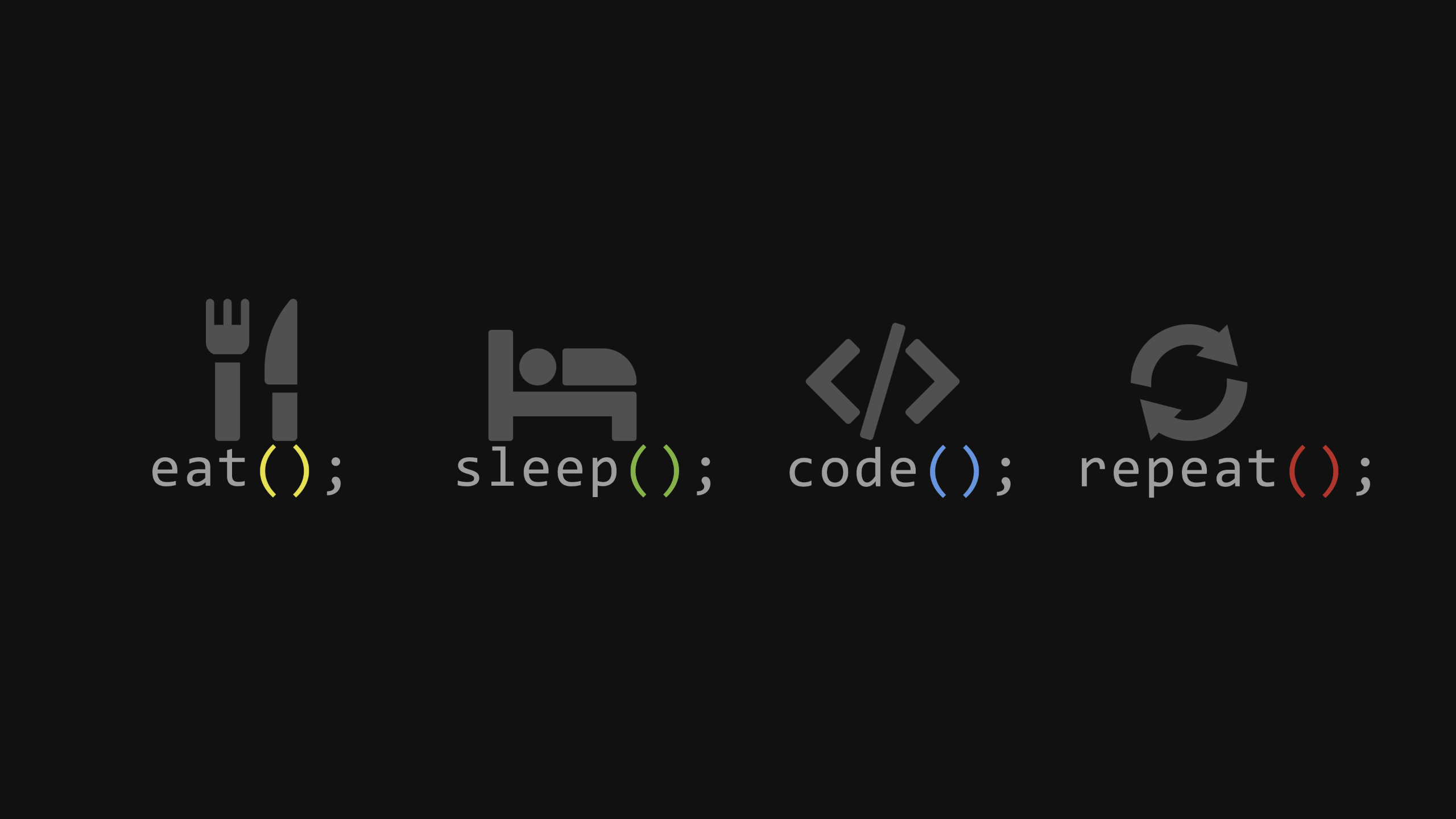前言
windows常见的文件操作有日志、操作配置文件、ini、注册表、音视频的文件存储。
而linux系统具有一切皆文件的概念。
正文
c/c++那会都是打开一个文件然后以什么模式,用完还要关闭。
c/c++ win32 mfc文件操作
c文件操作
fopen函数
1
2
3
4
| _ACRTIMP FILE* __cdecl fopen(
_In_z_ char const* _FileName,
_In_z_ char const* _Mode
);
|
fopen_s函数
1
2
3
4
5
| _ACRTIMP errno_t __cdecl fopen_s(
_Outptr_result_nullonfailure_ FILE** _Stream,
_In_z_ char const* _FileName,
_In_z_ char const* _Mode
);
|
fwrite函数
1
2
3
4
5
6
| _ACRTIMP size_t __cdecl fwrite(
_In_reads_bytes_(_ElementSize * _ElementCount) void const* _Buffer,
_In_ size_t _ElementSize,
_In_ size_t _ElementCount,
_Inout_ FILE* _Stream
);
|
带s一般都是所谓的安全函数
几种模式_Mode

- a add
- r read
- w weite
-
然后随便写个按钮绑定一下代码
1
2
3
4
5
6
7
8
9
10
11
12
13
14
15
| void CMyCFileDlg::OnBnClickedWriteFile(){
FILE *pFile = fopen("1.txt", "w");
if (pFile == NULL){
MessageBox(_T("文件打开失败"));
return;
}
char szBuf[1024] = "c language file";
fwrite(szBuf, 1, strlen(szBuf)+1, pFile);
fclose(pFile);
}
|

点击按钮之后文件夹目录就会多了这个1.txt,内容也是我们写的szBuf。
具体可以看文件创建时间是否符合我们刚才按下按钮的时候。
然后使用读文件
1
2
3
4
5
6
7
8
9
10
11
12
13
14
| void CMyCFileDlg::OnBnClickedReadFile(){
FILE *pFile = fopen("1.txt", "r");
if (pFile == NULL){
MessageBox(_T("文件打开失败"));
return;
}
char szbuf[1024] = { 0 };
int len = fread(szbuf, 1, 1024, pFile);
fclose(pFile);
MessageBox(szbuf);
}
|

实现起来也比较简单。
不过这里有个点要注意,因为读文件的时候文件不一定就写满了1024.
1
2
3
4
5
6
7
8
9
10
11
12
13
14
15
16
17
18
| void CMyCFileDlg::OnBnClickedReadFile(){
FILE *pFile = fopen("1.txt", "r");
if (pFile == NULL){
MessageBox(_T("文件打开失败"));
return;
}
char szbuf[1024] = { 0 };
fseek(pFile, 0, SEEK_END);
int fLen = ftell(pFile);
fseek(pFile, 0, SEEK_SET);
int len = fread(szbuf, 1, fLen, pFile);
fclose(pFile);
MessageBox(szbuf);
}
|
要注意偏移之后要让指针回到起始位置。
c++文件操作
c++是以类作为核心的语言,所以文件也通过一个类读写。std::ofstream
使用前记得
#include
using namespace std;
不然没法用这个类。解锁命名空间也是为了写着方便
1
2
3
4
5
6
7
| void CMyCFileDlg::OnBnClickedWriteFile(){
ofstream ofs("2.txt");
char szBuf[1024] = "c++ file edit";
ofs.write(szBuf, strlen(szBuf) + 1);
ofs.close();
}
|
写起来也非常简单
顺便把读文件也写了,到时候再看。
1
2
3
4
5
6
7
8
| void CMyCFileDlg::OnBnClickedReadFile(){
ifstream ifs("2.txt");
char szBuf[1024] = { 0 };
ifs.read(szBuf, 1024);
ifs.close();
MessageBox(szBuf);
}
|

效果自然是没啥问题的。
win32 api
其实跟之前进程用到过
1
2
3
4
5
6
7
8
9
| CreateFileW(
_In_ LPCWSTR lpFileName,
_In_ DWORD dwDesiredAccess,
_In_ DWORD dwShareMode,
_In_opt_ LPSECURITY_ATTRIBUTES lpSecurityAttributes,
_In_ DWORD dwCreationDisposition,
_In_ DWORD dwFlagsAndAttributes,
_In_opt_ HANDLE hTemplateFile
);
|
至于a和w就是多字节和Unicode的区别。
写文件的方式
1
2
3
4
5
6
7
| WriteFile(
_In_ HANDLE hFile,
_In_reads_bytes_opt_(nNumberOfBytesToWrite) LPCVOID lpBuffer,
_In_ DWORD nNumberOfBytesToWrite,
_Out_opt_ LPDWORD lpNumberOfBytesWritten,
_Inout_opt_ LPOVERLAPPED lpOverlapped
);
|
随便写写。
1
2
3
4
5
6
7
8
9
10
11
12
13
14
15
16
17
18
19
20
21
22
23
24
25
26
27
28
29
30
31
32
33
34
35
36
37
| void CMyCFileDlg::OnBnClickedWriteFile(){
HANDLE hFile;
hFile = CreateFile("3.txt", GENERIC_WRITE, NULL, NULL,
CREATE_NEW, FILE_ATTRIBUTE_NORMAL, NULL
);
if (hFile == INVALID_HANDLE_VALUE){
MessageBox("创建文件对象失败");
return;
}
DWORD dwWrite;
char szBuf[1024] = "win32 api edit file";
WriteFile(hFile, szBuf, strlen(szBuf) + 1, &dwWrite, NULL);
CloseHandle(hFile);
}
void CMyCFileDlg::OnBnClickedReadFile(){
HANDLE hFile;
hFile = CreateFile("3.txt", GENERIC_READ, NULL, NULL,
OPEN_EXISTING, FILE_ATTRIBUTE_NORMAL, NULL
);
if (hFile == INVALID_HANDLE_VALUE){
MessageBox("创建文件对象失败");
return;
}
DWORD dwRead;
char szBuf[1024] = { 0 };
ReadFile(hFile, szBuf, 1024, &dwRead, NULL);
CloseHandle(hFile);
MessageBox(szBuf);
}
|

这里有点比较麻烦,就是write的时候,好像只能创建一次
hFile = CreateFile("3.txt", GENERIC_WRITE, NULL, NULL, CREATE_NEW, FILE_ATTRIBUTE_NORMAL, NULL);
其中CREATE_NEW就是新建的意思,但是如果存在了他就会报错,但改成其它的感觉又不太合适。先凑合用。
MFC
写法跟c++比较类似吧
1
2
3
4
5
6
7
| void CMyCFileDlg::OnBnClickedWriteFile(){
CFile cf("4.txt", CFile::modeCreate | CFile::modeWrite);
char szBuf[1024] = "mfc edit files";
cf.Write(szBuf, strlen(szBuf) + 1);
cf.Close();
}
|
1
2
3
4
5
6
7
8
| void CMyCFileDlg::OnBnClickedReadFile(){
CFile cf("4.txt", CFile::modeRead);
char szBuf[1024] = { 0 };
cf.Read(szBuf, 1024);
cf.Close();
MessageBox(szBuf);
}
|

这样最基础的操作肯定是没问题的。
不过读文件好像还有别的骚操作。
1
2
3
4
5
6
7
8
9
10
11
12
13
14
15
16
17
| void CMyCFileDlg::OnBnClickedReadFile(){
CFileDialog fileDlg(TRUE);
fileDlg.m_ofn.lpstrTitle = "Test";
fileDlg.m_ofn.lpstrFilter = "Text Files(*.txt)\0*.txt\0All Files(*.*)\0*.*\0\0";
if (IDOK == fileDlg.DoModal()){
CFile cf(fileDlg.GetFileName(), CFile::modeRead);
DWORD dwFileLen = cf.GetLength();
char szBuf[1024] = { 0 };
cf.Read(szBuf, dwFileLen);
cf.Close();
MessageBox(szBuf);
}
}
|

点击读文件他会弹出一个文件夹让你选。
然后根据我们的过滤器,一种是text一种是all

随便打开其中一个都能读出来

配置文件的操作
配置文件的格式比较特殊,.ini
里面一般都是配置选项。
WritePrivateProfileString
1
2
3
4
5
6
| WritePrivateProfileStringW(
_In_opt_ LPCWSTR lpAppName,
_In_opt_ LPCWSTR lpKeyName,
_In_opt_ LPCWSTR lpString,
_In_opt_ LPCWSTR lpFileName
);
|
w和a就是对这些字符的要求不一样。
然后瞎写一个
1
2
3
4
5
6
7
8
9
10
11
| void CMyCFileDlg::OnBnClickedWriteFile(){
char szPath[MAX_PATH] = { 0 };
GetCurrentDirectory(MAX_PATH, szPath);
CString szPathFile;
szPathFile.Format("%s\\Test.ini", szPath);
WritePrivateProfileString("man", "friend", "张三", szPathFile);
WritePrivateProfileString("man", "student", "李四", szPathFile);
WritePrivateProfileString("school", "teacher", "王五", szPathFile);
}
|
启动之后点击写文件

可以在文件夹目录下看到我们写的配置。
至于读文件,也有点相似吧
要用到这个玩意
1
2
3
4
5
6
7
8
| GetPrivateProfileStringW(
_In_opt_ LPCWSTR lpAppName,
_In_opt_ LPCWSTR lpKeyName,
_In_opt_ LPCWSTR lpDefault,
_Out_writes_to_opt_(nSize, return + 1) LPWSTR lpReturnedString,
_In_ DWORD nSize,
_In_opt_ LPCWSTR lpFileName
);
|
额,这里ini格式瞎写的,所以读出来的时候可能看着太怪了。
1
2
3
4
5
6
7
8
9
10
11
12
13
14
15
16
17
18
19
20
| void CMyCFileDlg::OnBnClickedReadFile(){
char szPath[MAX_PATH] = { 0 };
GetCurrentDirectory(MAX_PATH, szPath);
CString szPathFile;
szPathFile.Format("%s\\Test.ini", szPath);
char dwKey[1024] = { 0 };
char dwKeyName[1024] = { 0 };
char dwValue[1024] = { 0 };
GetPrivateProfileString("man", "friend", NULL, dwKey, 1024, szPathFile);
GetPrivateProfileString("man", "student", NULL, dwKeyName, 1024, szPathFile);
GetPrivateProfileString("school", "teacher", NULL, dwValue, 1024, szPathFile);
CString strShow;
strShow.Format("friend:%s student:%s teacher:%s", dwKey, dwKeyName, dwValue);
MessageBox(strShow);
}
|
但反正最后还是读出了值:

注册表
注册表是存储在二进制文件里面的,win32api 提供了大量的函数操作注册表
额,默认打开的话,win+r是打开运行,然后输入regedit即可打开注册表,如果之前有用过就会很熟悉。
动注册表之前,vs需要用管理员启动,不然肯定是无法写入的。
项目还是之前那个没关系。
RegCreateKey创建指定的注册表项
1
2
3
4
5
6
7
8
9
10
11
12
13
14
15
16
17
18
19
20
21
| WINADVAPI
LSTATUS
APIENTRY
RegCreateKeyA (
_In_ HKEY hKey,
_In_opt_ LPCSTR lpSubKey,
_Out_ PHKEY phkResult
);
WINADVAPI
LSTATUS
APIENTRY
RegCreateKeyW (
_In_ HKEY hKey,
_In_opt_ LPCWSTR lpSubKey,
_Out_ PHKEY phkResult
);
#ifdef UNICODE
#define RegCreateKey RegCreateKeyW
#else
#define RegCreateKey RegCreateKeyA
#endif
|
这个微软就喜欢多字节和Unicode,从他头文件中各自宏定义去兼容这两种编码。
RegOpenKey 打开注册表
1
2
3
4
5
6
7
8
9
10
11
12
13
14
15
16
17
18
19
20
21
| WINADVAPI
LSTATUS
APIENTRY
RegOpenKeyA (
_In_ HKEY hKey,
_In_opt_ LPCSTR lpSubKey,
_Out_ PHKEY phkResult
);
WINADVAPI
LSTATUS
APIENTRY
RegOpenKeyW (
_In_ HKEY hKey,
_In_opt_ LPCWSTR lpSubKey,
_Out_ PHKEY phkResult
);
#ifdef UNICODE
#define RegOpenKey RegOpenKeyW
#else
#define RegOpenKey RegOpenKeyA
#endif
|
RegSetValue写入注册表
1
2
3
4
5
6
7
8
9
10
11
12
13
14
15
16
17
18
19
20
21
22
23
24
25
| WINADVAPI
LSTATUS
APIENTRY
RegSetValueA (
_In_ HKEY hKey,
_In_opt_ LPCSTR lpSubKey,
_In_ DWORD dwType,
_In_reads_bytes_opt_(cbData) LPCSTR lpData,
_In_ DWORD cbData
);
WINADVAPI
LSTATUS
APIENTRY
RegSetValueW (
_In_ HKEY hKey,
_In_opt_ LPCWSTR lpSubKey,
_In_ DWORD dwType,
_In_reads_bytes_opt_(cbData) LPCWSTR lpData,
_In_ DWORD cbData
);
#ifdef UNICODE
#define RegSetValue RegSetValueW
#else
#define RegSetValue RegSetValueA
#endif
|
RegQueryValue检索与指定注册表项的默认值或未命名值关联的数据。
1
2
3
4
5
6
7
8
9
10
11
12
13
14
15
16
17
18
19
20
21
22
23
| WINADVAPI
LSTATUS
APIENTRY
RegQueryValueA (
_In_ HKEY hKey,
_In_opt_ LPCSTR lpSubKey,
_Out_writes_bytes_to_opt_(*lpcbData, *lpcbData) __out_data_source(REGISTRY) LPSTR lpData,
_Inout_opt_ PLONG lpcbData
);
WINADVAPI
LSTATUS
APIENTRY
RegQueryValueW (
_In_ HKEY hKey,
_In_opt_ LPCWSTR lpSubKey,
_Out_writes_bytes_to_opt_(*lpcbData, *lpcbData) __out_data_source(REGISTRY) LPWSTR lpData,
_Inout_opt_ PLONG lpcbData
);
#ifdef UNICODE
#define RegQueryValue RegQueryValueW
#else
#define RegQueryValue RegQueryValueA
#endif
|
那么写入的部分其实还是有点水
1
2
3
4
5
6
7
8
9
10
11
12
13
14
15
16
17
18
19
20
21
22
23
| void CMyCFileDlg::OnBnClickedWriteFile(){
HKEY hKey;
DWORD dwWeight = 70;
DWORD dwRet = ::RegCreateKey(HKEY_CURRENT_USER, "Software\\HHH\\admin", &hKey);
if (dwRet != ERROR_SUCCESS){
MessageBox("创建注册表失败");
return;
}
dwRet = ::RegSetValueEx(hKey, "weight", NULL, REG_DWORD, (CONST BYTE *)dwWeight, 4);
if (dwRet != ERROR_SUCCESS){
MessageBox("写入注册表失败");
return;
}
::RegCloseKey(hKey);
}
|
然后跑起来看看注册表里面有没有我们写入的。

md,::RegCreateKey(HKEY_LOCAL_MACHINE, "SOFTWARE\\MYWEIGHT\\admin", &hKey);这个注册表位置管理员打开的软件居然写不进去,我找了半天没找到,换了个地方写就马上见效,离谱,浪费我一堆时间啊。
然后读的部分
1
2
3
4
5
6
7
8
9
10
11
12
13
14
15
16
17
18
19
20
21
22
23
24
25
| void CMyCFileDlg::OnBnClickedReadFile(){
HKEY hKey;
DWORD dwRet = ::RegOpenKey(HKEY_CURRENT_USER, "Software\\HHH\\admin", &hKey);
if (dwRet != ERROR_SUCCESS){
MessageBox("打开注册表失败");
return;
}
DWORD dwWight;
DWORD dwType;
DWORD dwSize;
CString strShow;
dwRet = ::RegQueryValueExA(hKey, "weight", 0, &dwType, (LPBYTE) &dwWight, &dwSize);
if (dwRet != ERROR_SUCCESS){
MessageBox("读取注册表失败");
return;
}
strShow.Format("Weight = %d", dwWight);
::RegCloseKey(hKey);
MessageBox(strShow);
}
|
其实写起来也不难,就是要填充这个参数问题。

效果就是这样了。
常规的文件等级
- 调试日志 debugview 文件日志、警告日志、错误日志 /五星
- 视频存储 /四星
- 文件传输CFile和Socket结合 /四星
- C语言和mfc的文件操作,win32api /三星
- windows的配置文件 /五星
- 注册表 病毒 逆向 /五星
结语
反正比较常用的文件操作还是以c语言和mfc为主吧,毕竟c用的很久了。mfc嘛自然在这个框架里面最好用。



















